This is a part of a series; Part one is here, two here, and three here.
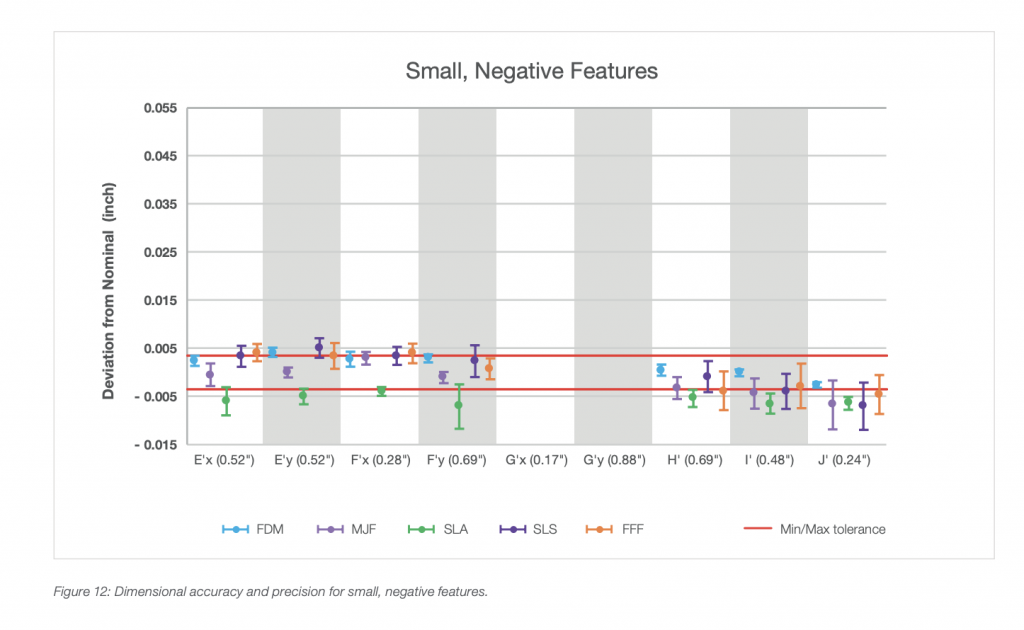
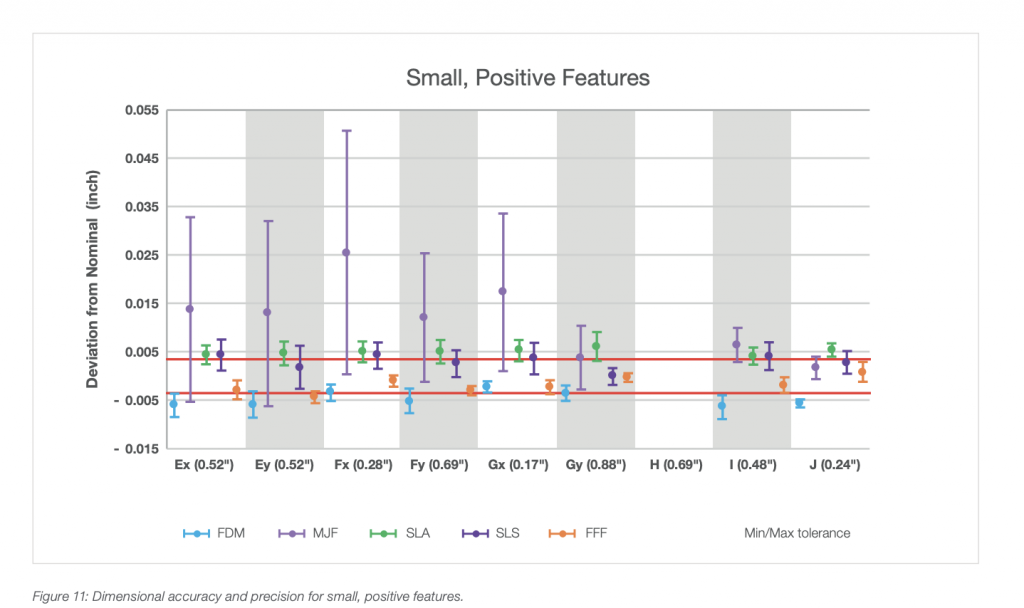

The results for small, positive features are shown in Figure 11 and Table 4. FFF had the best results with seven features being within tolerance. However, SLA, SLS and FDM accuracy was fair to good with all measurements being within or very near the specified tolerance band. MJF proved to be very inaccurate (0.0017 in. to 0.0256 in.) and very imprecise (0.0023 in. to 0.0252 in.). For precision, SLA, FFF and FDM were comparable with SDs ranging from 0.0008 in. to 0.0027 in. Except for FDM, small, negative feature results (Figure 12 and Table 5) were not consistent with those for small, positive features. FDM continued to show both accuracy (-0.0026 in. to 0.0042 in.) and precision (0.0006 in. to 0.0016 in.). SLA, SLS and FFF, on the other hand, have poorer accuracy and precision. Meanwhile, MJF has generally better results for both accuracy and precision.
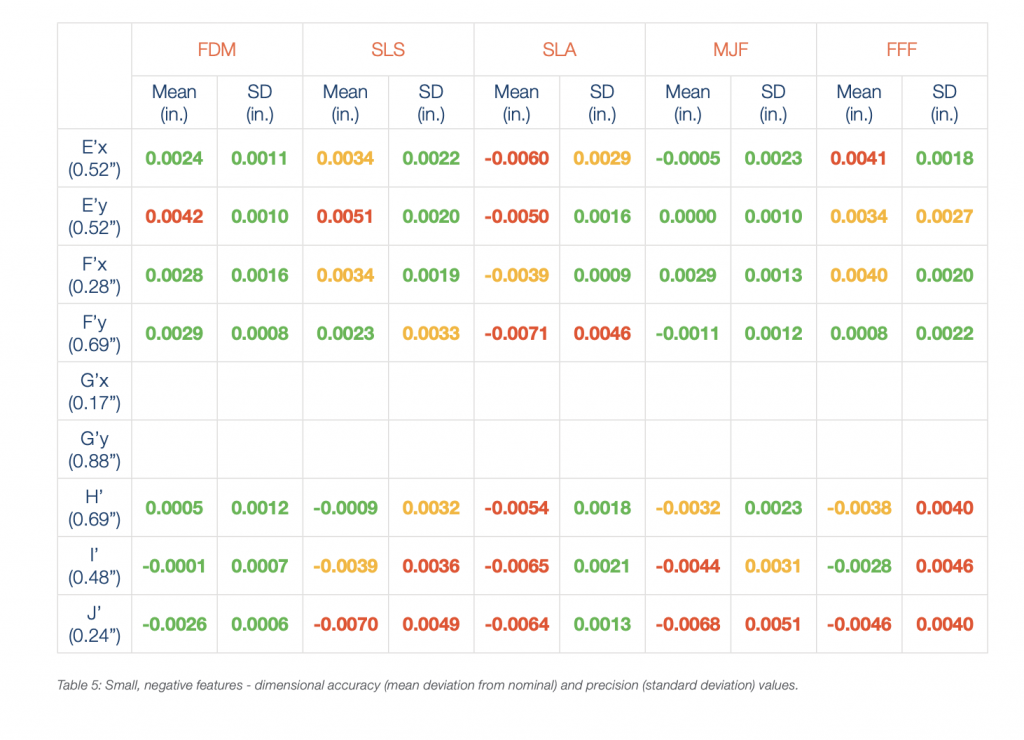
Machine to Machine To determine the influence of inconsistencies between machines on accuracy and precision, Figures 13, 14 and 15 present the dimensional measurement results for Machine 1 and Machine 2. These charts use the same format as those that preceded them, but the results for each machine are presented side by side. Low variability is shown when the mean deviation from nominal dimensions and standard deviations (SD) are similar for both machines. For large, small-positive and small-negative features, FDM proved to be the most consistent across two machines for both accuracy and precision. For precision, the standard deviation difference did not exceed 0.0007 in. MJF, on the other hand, proved to have significant differences in both accuracy and precision. For accuracy, the average difference between machines is 0.0128 in. while the average SD difference is 0.0021 in. Additionally, for some features, such A, B, E and F, MJF lacked precision on individual machines. In comparing machine-to-machine results for SLA, SLS and FFF, Figures 13, 14 and 15 do not show a consistent pattern across all features for either accuracy or precision.

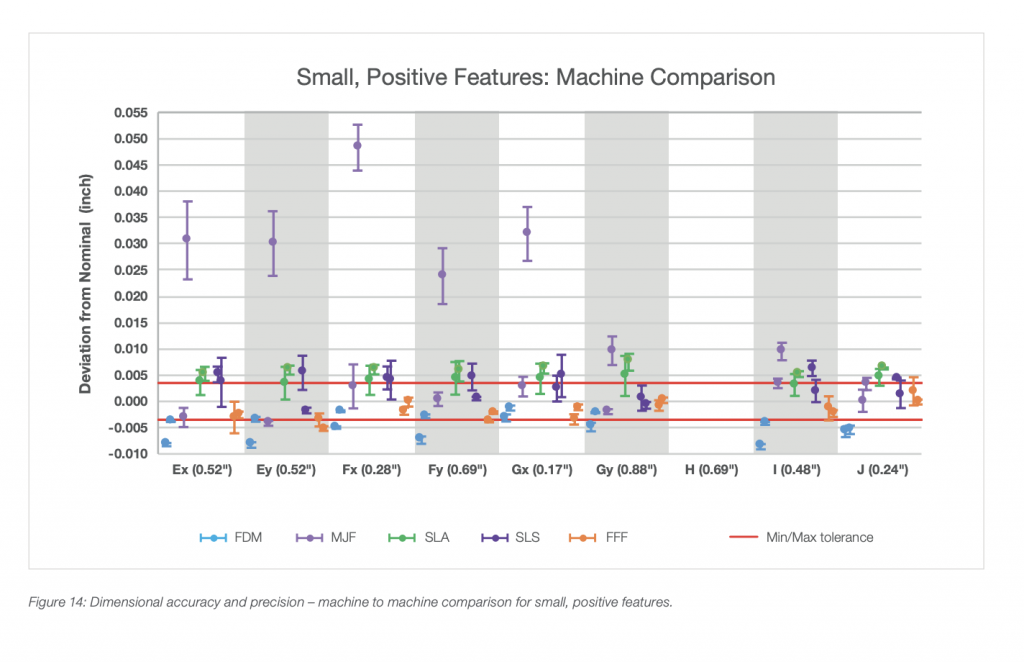
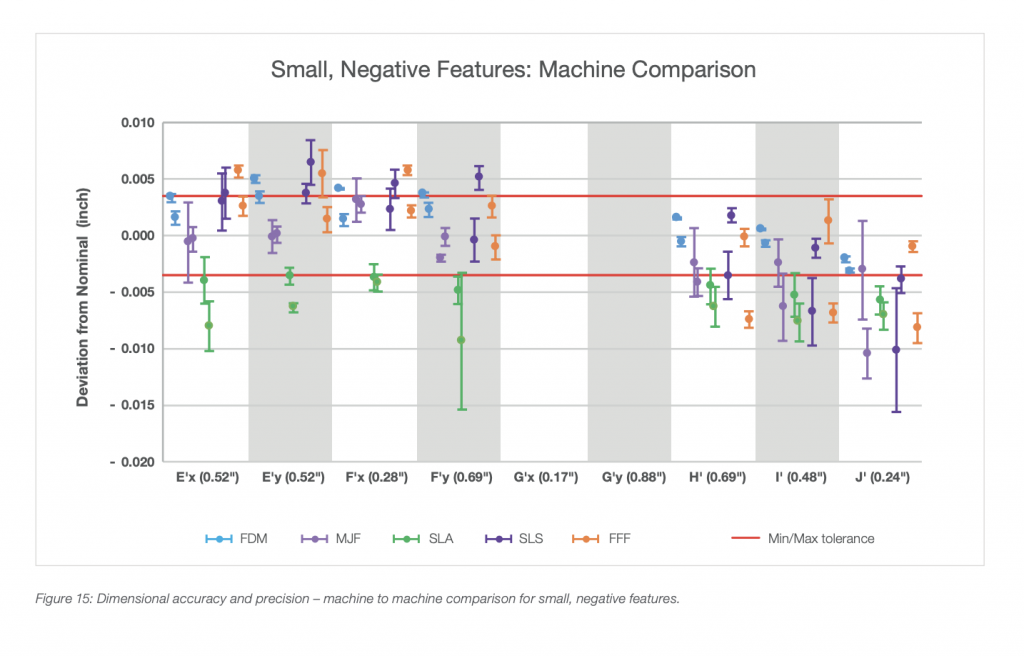
Conclusion Considering all mechanical properties, FDM and SLA had the lowest variabilities with tensile strength and tensile modulus COVs below 3.55% and EAB variances below 14.12%. MJF performed well in all areas except EAB in the XY orientation. SLS, CLIP and FFF faired poorer with significantly higher variations and a lack of consistency in the COV values for the three properties between build orientations. When evaluated for property variability between machines, FDM and MJF were the most consistent. However, SLA and CLIP each showed good machine-to-machine consistency for two of the three properties. In contrast, SLS and FFF both showed high variability between the mechanical properties delivered from each machine. The analysis of dimensional accuracy and variance showed FDM to have the best results across large, small-negative and small-positive features. SLA proved to have low variances but was less accurate. The opposite was true for SLS, which was accurate but imprecise. FFF results were mixed with accuracy and precision varying by feature type. In the dimensional component of this study, MJF was found to be both inaccurate and imprecise. In the comparison of machine-to-machine results, FDM also was found to be the most consistent with respect to both accuracy and precision. Meanwhile, MJF had the highest discrepancies between machines. SLA, SLS and FFF had a mix of good and poor variance in the machine comparison. This study found that for mechanical properties, considering both overall results and machine-tomachine variances, FDM and MJF had the best precision. For dimensional accuracy and variance, both overall and machine-to-machine, FDM had the best results. Therefore, this study shows that for variance in mechanical properties and geometric dimensions, FDM is the front-runner for manufacturing readiness.
This paper was written by Todd Grimm, a long established 3D printing consultant. It was however commissioned by Stratasys.
Subscribe to Our Email Newsletter
Stay up-to-date on all the latest news from the 3D printing industry and receive information and offers from third party vendors.
You May Also Like
Air Force Awards Fortius Metals $1.25M to Qualify 3D Printing Wire for Hypersonic Applications
AFWERX, part of the US Air Force Research Laboratory (AFRL), awarded a Direct-to-Phase II Small Business Innovation Research (SBIR) contract worth $1.25 million to Colorado’s Fortius Metals, to accelerate qualification...
US Air Force Awards JuggerBot $4M for Large-format Hybrid 3D Printing
Large-format 3D printer manufacturer JuggerBot has received a $4 million grant to develop a large format 3D printer, courtesy of the Under Secretary of Defense, Research and Engineering Manufacturing Technology...
Where Have All AM’s Unicorns Gone?
In the rapidly evolving world of 3D printing, startups valued at over a billion dollars, known as unicorns, once seemed as fantastical as the mythical creatures themselves. While a few...
How My Childhood Fascination with Planes Led to Investing in 3D Printing
My fascination with aerospace started young, and I started studying planes–identifying them in the sky and learning everything I could about how they work. Fast forward to my first week...































